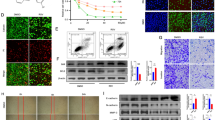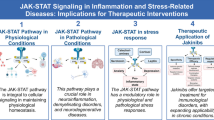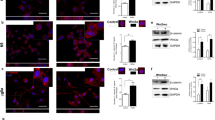Abstract
Bone cancer pain (BCP) is the most common type of pain in cancer patients, during which microglia cells were activated. A previous study showed BAM8-22 had the ability to alleviate BCP via inhibiting microglia activation while the mechanism was not clear. This study aims to investigate the specific mechanism of BAM8-22 inhibiting microglia activation. This study was mainly investigated in BCP mice or LPS-treated microglia BV-2 cells. The behavior tests of mice were performed at 0, 1, 2, 12, and 24 h after BAM8-22 treatment. The expression of miR-184 and CX3CR1 mRNAs was detected by quantitative RT-PCR. The expression of CX3CR1 protein and microglia activation marker, Iba-1, was measured by western blot analysis. The levels of TNF-α and IL-1β were detected by ELISA. Dual-luciferase assay was performed to verify the combination between miR-184 and CX3CR1. After BAM8-22 treatment, increased miR-184 level was observed in both BCP mice and LPS-treated BV-2 cells, with the downregulated expression of Iba-1 and inflammatory cytokines, namely the inhibition of microglia activation. The inhibition of miR-184 reversed the inhibitory effect of BAM8-22 on microglia activation. Further, in vitro studies showed that miR-184 bound to the 3′UTR of CX3CR1 and inhibited microglia activation via repressing CX3CR1 expression. What’s more, the suppression of CX3CR1 expression eliminated the reversal effect of the miR-184 inhibitor on BAM8-22-induced microglia activation and decreased Iba-1 expression and pro-inflammatory cytokine secretion. In BCP models, miR-184 was upregulated by BAM8-22 and the elevated level of miR-184 bound to the 3′UTR region of CX3CR1 and repressed CX3CR1 expression, thus inhibiting the microglia activation, suggesting the potential application of miR-184/CX3CR1 for BCP treatment.





Similar content being viewed by others
References
Aldrich BT et al (2009) Changes in expression of sensory organ-specific microRNAs in rat dorsal root ganglia in association with mechanical hypersensitivity induced by spinal nerve ligation. Neuroscience 164(2):711–723
Bali KK et al (2013) Genome-wide identification and functional analyses of microRNA signatures associated with cancer pain. EMBO Mol Med 5(11):1740–1758
Bartel DP (2009) MicroRNAs: target recognition and regulatory functions. Cell 136(2):215–233
Chaplan SR et al (1994) Quantitative assessment of tactile allodynia in the rat paw. J Neurosci Methods 53(1):55–63
Cheng W et al (2014) Resveratrol attenuates bone cancer pain through the inhibition of spinal glial activation and CX3CR1 upregulation. Fundam Clin Pharmacol 28(6):661–670
Clark AK et al (2007) Inhibition of spinal microglial cathepsin S for the reversal of neuropathic pain. Proc Natl Acad Sci U S A 104(25):10655–10660
Elramah S et al (2017) Spinal miRNA-124 regulates synaptopodin and nociception in an animal model of bone cancer pain. Sci Rep 7(1):10949–10949
Feng L et al (2018) MiR-184 retarded the proliferation, invasiveness and migration of glioblastoma cells by repressing stanniocalcin-2. Pathol Oncol Res 24(4):853–860
Goblirsch MJ, Zwolak P, Clohisy DR (2005) Advances in understanding bone cancer pain. J Cell Biochem 96(4):682–688
Gong Q et al (2015) Altered microRNAs expression profiling in mice with diabetic neuropathic pain. Biochem Biophys Res Commun 456(2):615–620
Hald A et al (2009) Differential activation of spinal cord glial cells in murine models of neuropathic and cancer pain. Eur J Pain 13(2):138–145
Hou B et al (2016) Positive feedback regulation between microRNA-132 and CREB in spinal cord contributes to bone cancer pain in mice. Eur J Pain 20(8):1299–1308
Liu Y et al (2015) CX3CL1/CX3CR1-mediated microglia activation plays a detrimental role in ischemic mice brain via p38MAPK/PKC pathway. Journal of cerebral blood flow and metabolism : official journal of the International Society of Cerebral Blood Flow and Metabolism 35(10):1623–1631
Mei HX et al (2017) Effects of miR-338 on morphine tolerance by targeting CXCR4 in a rat model of bone cancer pain. Biosci Rep:37(2)
Ren BX et al (2012) Intrathecal injection of metabotropic glutamate receptor subtype 3 and 5 agonist/antagonist attenuates bone cancer pain by inhibition of spinal astrocyte activation in a mouse model. Anesthesiology 116(1):122–132
Sun S et al (2007) New evidence for the involvement of spinal fractalkine receptor in pain facilitation and spinal glial activation in rat model of monoarthritis. Pain 129(1–2):64–75
Sun YE et al (2016) Activation of spinal MrgC-Gi-NR2B-nNOS signaling pathway by Mas oncogene-related gene C receptor agonist bovine adrenal medulla 8-22 attenuates bone cancer pain in mice. American Journal of Translational Research 8(2):1144–1154
Tsuda M (2016) Microglia in the spinal cord and neuropathic pain. J Diabetes Investig 7(1):17–26
Wang D et al (2016) Mas-related gene (Mrg) C receptors inhibit mechanical allodynia and spinal microglia activation in the early phase of neuropathic pain in rats. Neurosci Lett 618:115–121
Wang YB et al (2018) MicroRNA-184 inhibits proliferation and promotes apoptosis of human colon cancer SW480 and HCT116 cells by downregulating C-MYC and BCL-2. J Cell Biochem 119(2):1702–1715
Yip PK et al (2009) Rapid isolation and culture of primary microglia from adult mouse spinal cord. J Neurosci Methods 183(2):223–237
Zabel MK et al (2016) Microglial phagocytosis and activation underlying photoreceptor degeneration is regulated by CX3CL1-CX3CR1 signaling in a mouse model of retinitis pigmentosa. Glia 64(9):1479–1491
Zhang M-Y et al (2015) Levo-Tetrahydropalmatine attenuates bone cancer pain by inhibiting microglial cells activation. Mediat Inflamm 2015:752512–752512
Zhao J et al (2010) Small RNAs control sodium channel expression, nociceptor excitability, and pain thresholds. J Neurosci 30(32):10860–10871
Zhou YQ et al (2016) Targeting glia for bone cancer pain. Expert Opin Ther Targets 20(11):1365–1374
Zhuang ZY et al (2007) Role of the CX3CR1/p38 MAPK pathway in spinal microglia for the development of neuropathic pain following nerve injury-induced cleavage of fractalkine. Brain Behav Immun 21(5):642–651
Funding
This work was supported by the Natural Science Foundation of Inner Mongolia Autonomous Region (No. 2018MS08066).
Author information
Authors and Affiliations
Corresponding author
Ethics declarations
All procedures during the experiment were approved by the Inner Mongolia Autonomous Region People’s Hospital.
Conflict of Interest
The authors declare that they have no conflict of interest.
Additional information
Publisher’s Note
Springer Nature remains neutral with regard to jurisdictional claims in published maps and institutional affiliations.
Electronic Supplementary Material
Supplemental Figure 1
Number of spontaneous finches (NSF) and paw withdraw mechanical threshold (PWMT) were examined at five-time points in BCP mice (0, 1, 2, 12, 24 h after intrathecal injection of BAM8-22).*P<0.05 vs 0 h. (PNG 220 kb)
Rights and permissions
About this article
Cite this article
Wang, A., Tie, M., Guo, D. et al. A Novel Mechanism of BAM8-22 Inhibiting Microglia Activation: Represses CX3CR1 Expression via Upregulating miR-184. J Mol Neurosci 70, 550–558 (2020). https://doi.org/10.1007/s12031-019-01455-0
Received:
Accepted:
Published:
Issue Date:
DOI: https://doi.org/10.1007/s12031-019-01455-0




